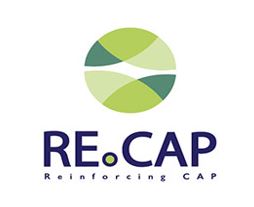 |
RECAP: PERSONALISED PUBLIC SERVICES IN SUPPORT OF THE IMPLEMENTATION OF THE CAP H2020 INSO-2014-2015/CNECT 2016-2018, GA: Νο 693171 291.375 EUR (NOA Budget)/2.142.382 EUR (Overall Budget) |
The projects relies on (α) the roadmap resulted from the GEO-CRADLE project with respect to the research priorities concerning the gathering and channeling of information in support to the Common Agriculture Policy, and (b) the Copernicus DataHubs operated by the BEYOND Center of Excellence (e.g. Hellenic Mirror Site, DIASHub).
RECAP develops an operational platform for public services for the improved implementation of the Common Agricultural Policy (CAP). It integrates open satellite data (Sentinel data from the Hellenic Mirror Site & Copernicus SciHub and DIASHub) and crowd-data, and transforms them into co-designed, and co-created services to meet information needs of public authorities, farmers, and agricultural consultants.
The project:
- increases efficiency and transparency of public authorities for the implementation of the CAP;
- allows improved remote monitoring of farmers' obligations by using open geo-spatial data;
- offers personalized services to farmers for better compliance with the environmental standards imposed by the CAP;
- stimulates the development of state-of-the-art and the delivery of innovative added value services for the benefit of the stakeholders in Earth Observation and Agriculture sectors.
The research team of BEYOND Center of Excellence designed, implemented and analyzed innovative EO data analysis and object based interpretation methods (OBIA), in order to produce detailed crop maps in three different levels of crop nomenclature. For the classification of the big feature spaces created from using multi-temporal Sentinel-2 and -1 data, the research team used state-of-the-art non-parametric Support Vector Machines (SVM) and ensemble Bagged Trees (BT) classifiers, accordingly adapted to provide both enhanced accuracy and execution time. The feature space is designed to be rich, comprising of multispectral imagery and vegetation index time-series.
Several experiments resulted in determining the suited number and nature of useful variables in all levels of nomenclature. The study essentially describes a completely transferable and scalable set of methods. The crop identification has designed so as to be geographically independent and scalable from a small region to national or even continental scales. Input data are deliberately kept least and freely available in order to achieve maximum transferability and ease of data retrieval.


